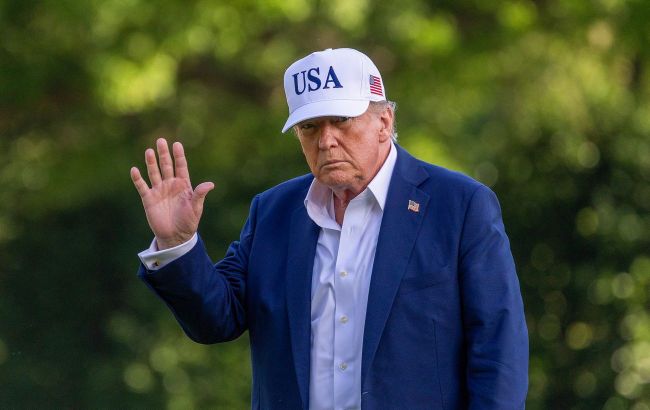Trump doubles down on medicine prices with 100% foreign drug tariff
 Donald Trump, President of the US (photo: Getty Images)
Donald Trump, President of the US (photo: Getty Images)
US President Donald Trump announced the introduction of new large-scale tariffs, including a 100% duty on all patented and branded medicines imported into the country, according to Bloomberg.
The restrictions will take effect on October 1, 2025, unless pharmaceutical companies begin building production facilities within the US.
Trump clarified on social media that the tariffs will not apply to pharmaceutical products for which manufacturing facilities have already been built or are under construction in the US. In this way, the White House aims to compel multinational corporations to relocate drug production from Europe and Asia to America.
The new decision is part of a broader tariff campaign. Starting next week, the US will impose a 25% duty on imported heavy trucks, 50% on kitchen cabinets and bathroom furniture, and 30% on upholstered furniture. Experts note that this represents a sharp expansion of the tariff pressure that Trump began immediately after returning to the White House.
Market reaction: news of the tariffs triggered a decline in Asian stock markets, hitting pharmaceutical company shares in Japan, Australia, and South Korea particularly hard.
Who is at risk
- Pharmaceutical manufacturers that have not yet relocated production to the US. For example, the active ingredients for Ozempic and Wegovy (Novo Nordisk) are produced in Denmark, while key stages of Mounjaro (Eli Lilly) are manufactured in Ireland.
- Johnson & Johnson produces the immune drug Stelara in Switzerland and the cancer drug Darzalex in Denmark.
- Bristol-Myers Squibb mainly manufactures Opdivo in Ireland and Switzerland.
- Novartis supplies Cosentyx and Entresto from Switzerland.
These companies will need to prove that they are genuinely building US plants; otherwise, their drugs could immediately see prices double.
Who is safe
Many pharmaceutical giants have been actively investing in US production in recent months. Novo Nordisk is already building a plant in North Carolina, and Eli Lilly has announced the creation of four manufacturing sites.
Legal mechanism
Trump is using Section 232 of the Trade Expansion Act, which allows tariffs to be imposed without Congress's approval if imports are deemed a threat to national security. Previously, this tool was applied to steel, aluminum, and automobiles.
In the coming weeks, the US will impose additional tariffs on imports of semiconductors, critical minerals, robotics, and medical equipment.
In April, the US Department of Commerce launched an investigation into dependence on imported drugs and their components, which may form the basis for even broader restrictions.
Pharmaceutical companies have already received an ultimatum: by the end of September, they must voluntarily lower prices for the US government to match the lowest international levels.
Analysts note that most global corporations already have some production in the US, so the impact of new tariffs could range from minimal to moderate. However, key drugs produced exclusively abroad may still be at risk.
Trump’s customs tariffs
In early April 2025, Trump introduced unprecedented import tariffs. However, by April 9, the US president suspended the additional tariffs for a number of countries.
Currently, the US has reached an agreement with the EU regarding customs duties. Trump announced the introduction of a 15% general tariff on imports from the 27 EU countries.
Additionally, Trump imposed an extra 25% tariff on India, one of Russia’s largest trading partners.

